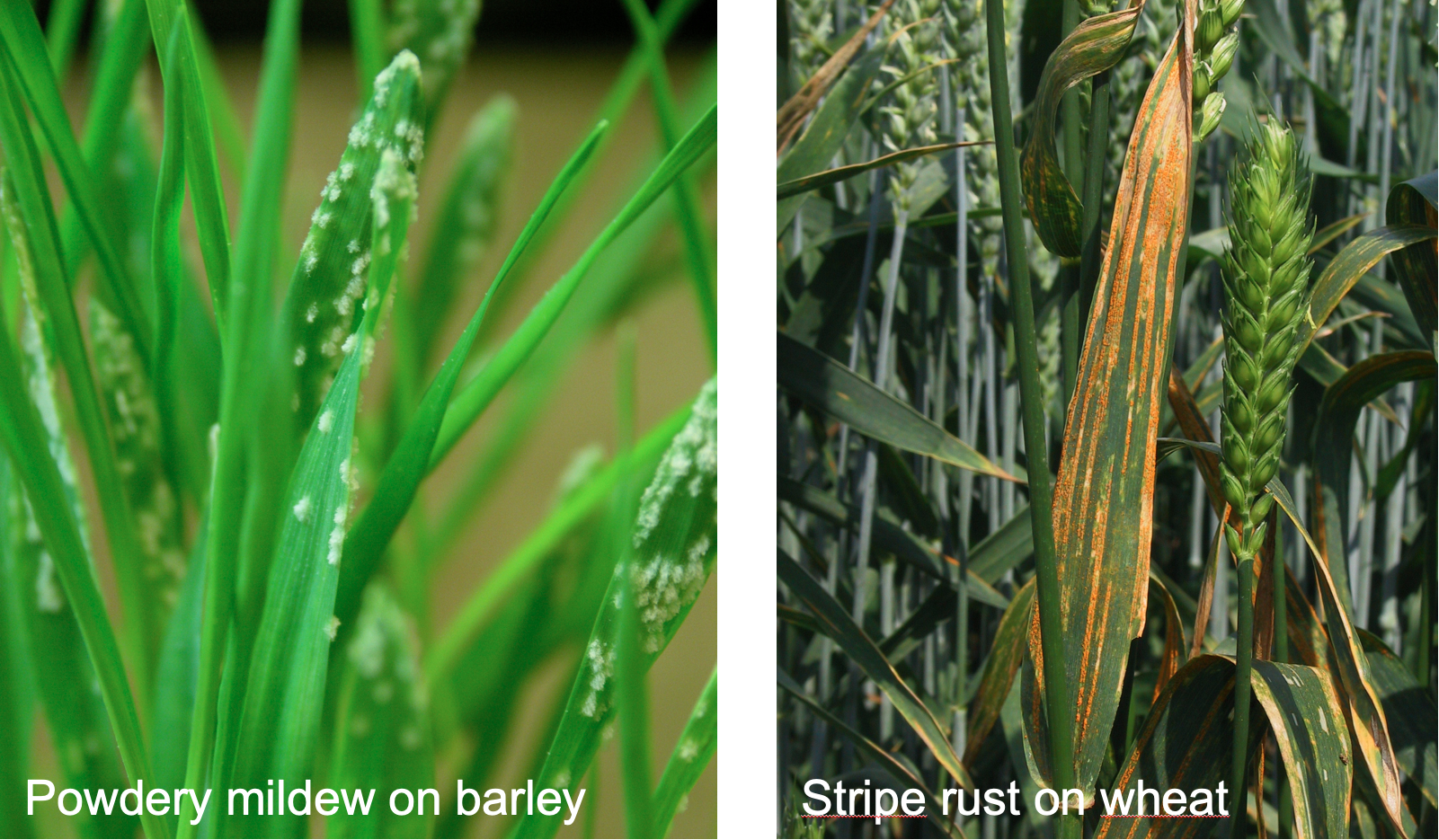
PlantsGoImmune - A new paradigm for disease-free crops of tomorrow
A Novo Nordisk Foundation Challenge project that aims to design barley and wheat resistance to powdery mildew and rust disease based on novel principles.
A recent study estimated that approximately 20% of the global crop production is lost to infectious plant diseases, despite use of pathogen control means, such as agrochemicals. Genes for disease resistance are commonly introduced into plant cultivars to activate efficient immunity upon pathogen attack. However, these resistances are generally not durable as new pathogen genotypes that overcome the resistances appear after a few years. This calls for smarter regulation of the plant immunity. Therefore, PlantsGoImmune aims to design resistance by following three overlapping strategies.
- Effector-insensitive effector targets
Make non-host-inspired “effector-insensitive effector targets” to prevent pathogen effectors from manipulating plant immunity and susceptibility. - Susceptibility mutants
Eliminate susceptibility components that nourish the pathogens. This is likely to activate lesion formation, which we will “cure” by inactivating monitoring NLR-receptor proteins that trigger this undesired feature. - Effector decoy
Exploit an NLR-monitored effector target, otherwise not targeted by fungal effectors, and turn it into a powdery mildew/rust effector decoy. This will make these pathogens activate this receptor and trigger immunity.
- Effector targets
Selected barley powdery mildew and wheat stripe rust fungal effectors are being used in 1) yeast 2-hybrid screens for plant effector targets, and 2) in yeast growth retardation assays to search for interference of general eukaryotic cellular pathways. Based hereon effector/target sets will be selected, which have potential to contribute to resistance by making effector-insensitive effector targets.
An opposite strategy will be followed as well. Here a known cereal NLR-monitored protein will be edited to become a powdery mildew/rust effector target (a decoy), and thereby immunity will be activated after attack. - Membrane trafficking in immunity
Previous studies of membrane trafficking have shown that separate pathways control pre- and post-invasive immunity to the powdery mildew fungus. Interestingly, the pathways mediate secretion of two distinct classes of extracellular vesicles (EVs). Ongoing studies aim to identify more molecular details of these pathways, including how they diverge. EVs contain small RNAs and we are studying how these are loaded and potentially influencing the pathogens via RNA interference. - Susceptibility components
Pathogens exploit plant mechanisms to their own benefit, including nutrient transfer and establishment of a membrane niche inside the host cell. Unlike immunity, susceptibility is poorly understood despite its potential importance as an avenue for disease resistance. The Mlo protein is being studied from this perspective. Powdery mildew and rust fungi develop haustorial structures inside the plant cells and stimulate the plant cell to generate extrahaustorial membranes (EHMs) as an essential susceptibility component. In PlantsGoImmune, we address how the EHM is formed based on our previous finding that barley powdery mildew EHM shares features with the endoplasmic reticulum (ER) membrane.
During the studies of effector targets, we will aim to select proteins involved in membrane processes controlling immunity and susceptibility. This will allow us to use our insight in these processes to assay the cellular impact of the effectors and how this is influenced by different versions of effector targets.
Contact
Hans Thordal-Christensen
Professor
htc@plen.ku.dk
+45 35 33 34 43
Dorine Jeanne Mariëtte du Mee
Project Manager
dorine.dumee@plen.ku.dk
+45 35 33 36 76
Funded by:
 Novo Nordisk Foundation
Novo Nordisk Foundation
Project: PlantsGoImmune - A new paradigm for disease-free crops of tomorrow
Period: 1 January 2020 - 23 December 2025
